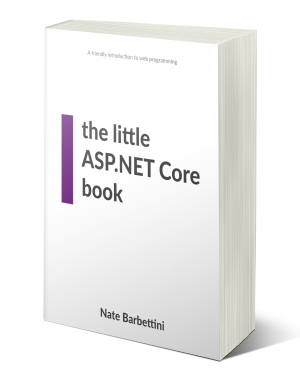The Little ASP.NET Core Book, revised

Last year, I published The Little ASP.NET Core Book, a friendly and free introduction to web programming. The book is published under a Creative Commons license, and the source is freely available on Github.
People from all over the world have read it to learn how to build modern web applications, or just to brush up on what’s new in ASP.NET Core 2.0.
Today, I’m releasing an updated version that adds brand-new content and incorporates many suggestions from readers. Keep reading to learn more, or download a copy!

 by
by